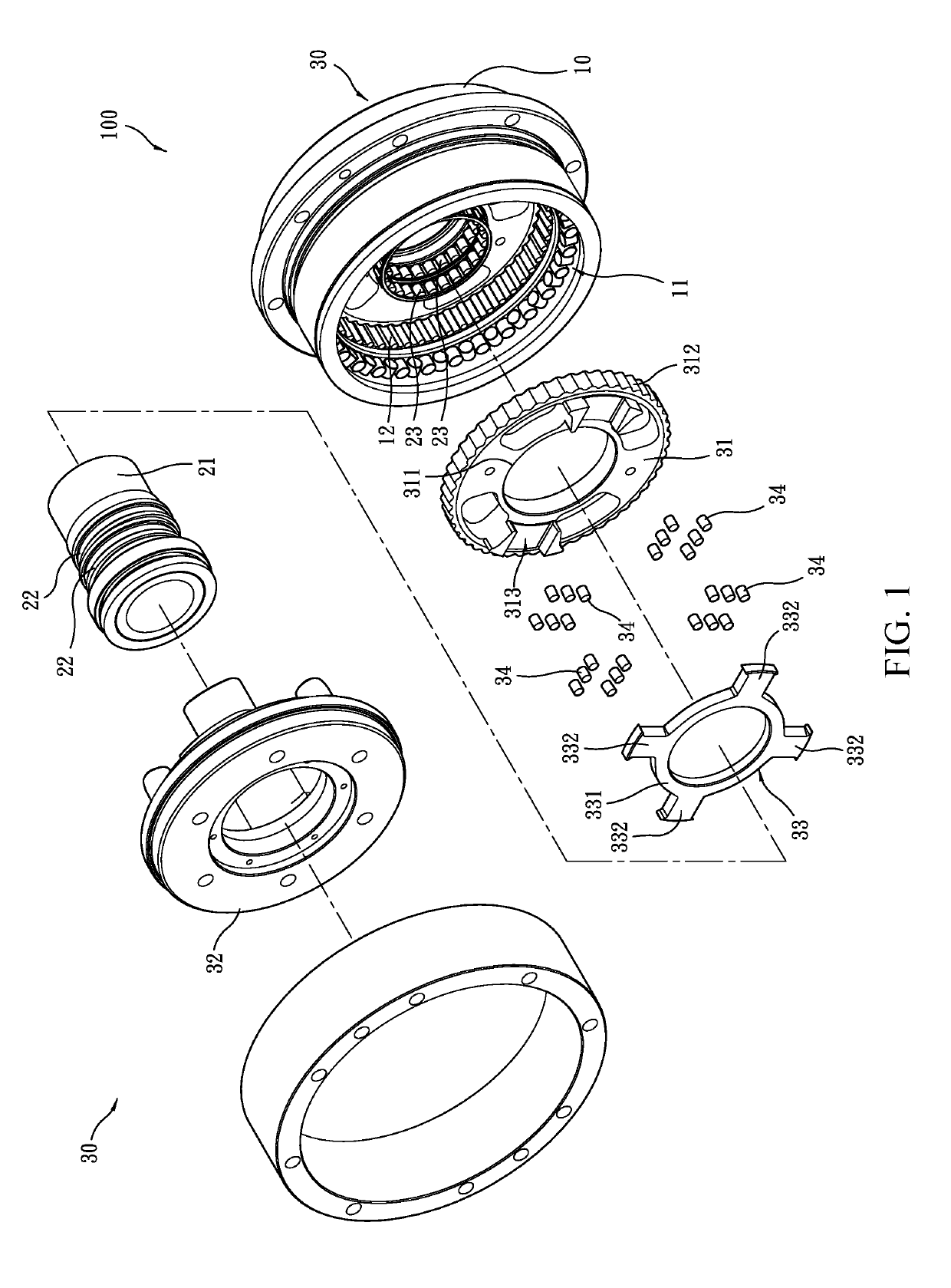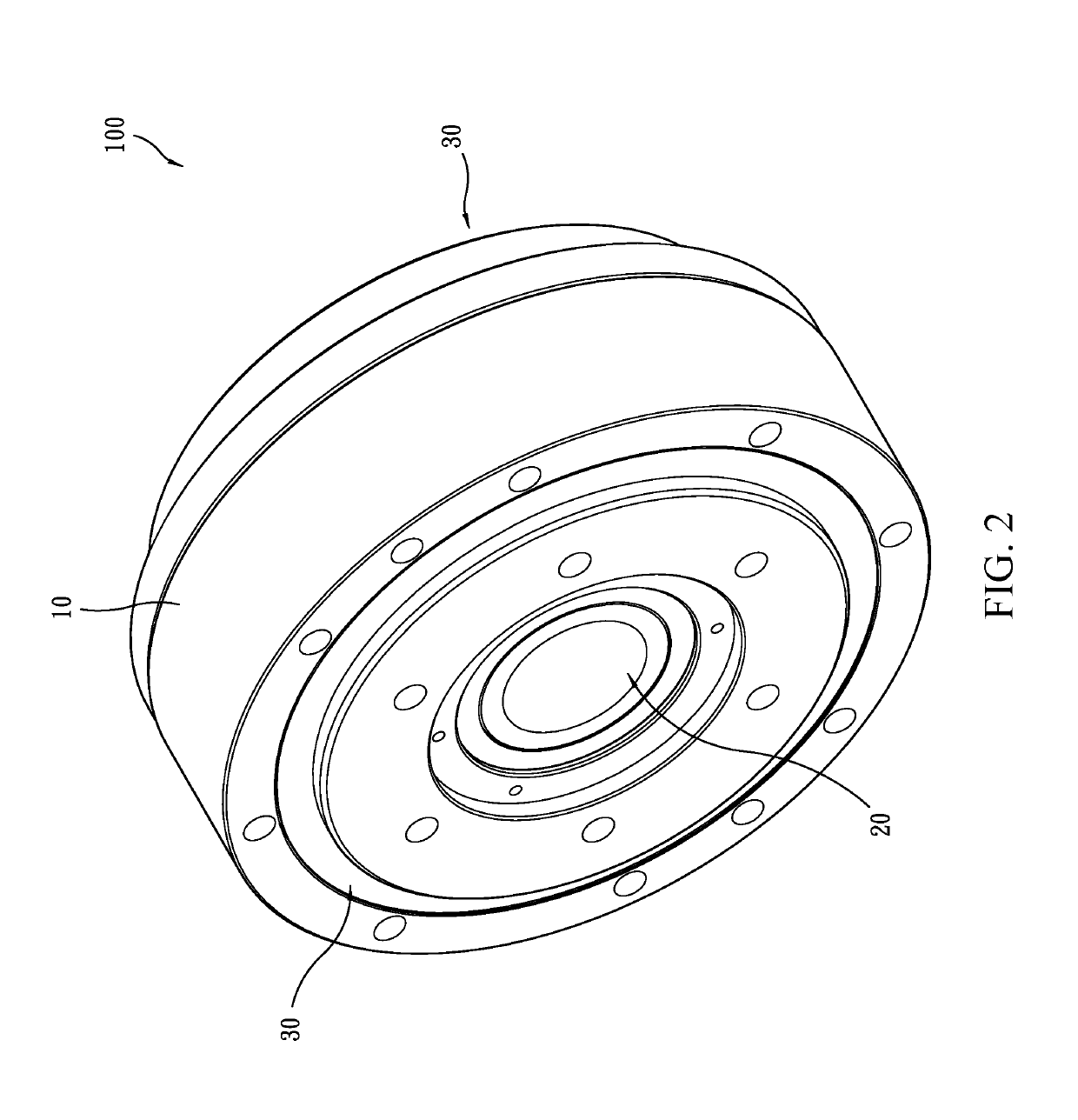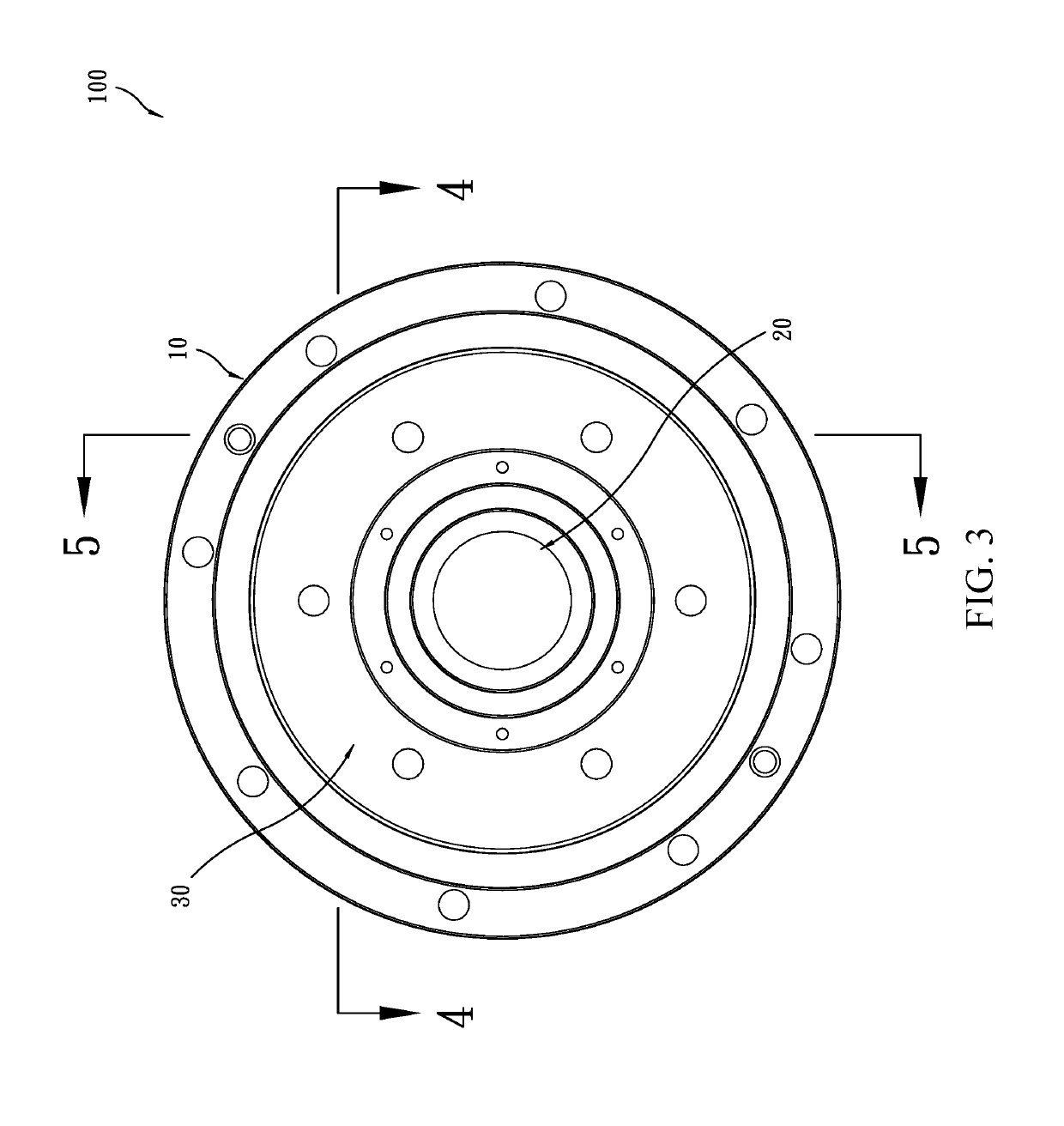Cycloidal reducer
a cycloidal reducer and reducer technology, applied in the direction of yielding couplings, toothed gearings, gearings, etc., can solve the problems of unfavorable assembly, unfavorable assembly efficiency, and increased assembly time, and achieve the effects of reducing assembly time, extending assembly time, and poor assembly efficiency
- Summary
- Abstract
- Description
- Claims
- Application Information
AI Technical Summary
Benefits of technology
Problems solved by technology
Method used
Image
Examples
Embodiment Construction
[0016]The following descriptions are exemplary embodiments only, and are not intended to limit the scope, applicability or configuration of the invention in any way. Rather, the following description provides a convenient illustration for implementing exemplary embodiments of the invention. Various changes to the described embodiments may be made in the function and arrangement of the elements described without departing from the scope of the invention as set forth in the appended claims.
[0017]Referring to FIGS. 1-5, the present invention provides, in a preferred embodiment, a cycloidal reducer 100, which generally comprises a housing 10, an input bushing 20, and two speed-reduced output units 30.
[0018]Referring to FIGS. 1-5, the housing 10 comprises an axial mounting hole 11 and an internal ring gear 12 formed on an inner circumferential surface of the axial mounting hole 11.
[0019]Referring to FIGS. 1-5, the input bushing 20 comprises a bushing 21, two eccentric collars 22 mounted ...
PUM
 Login to View More
Login to View More Abstract
Description
Claims
Application Information
 Login to View More
Login to View More - R&D
- Intellectual Property
- Life Sciences
- Materials
- Tech Scout
- Unparalleled Data Quality
- Higher Quality Content
- 60% Fewer Hallucinations
Browse by: Latest US Patents, China's latest patents, Technical Efficacy Thesaurus, Application Domain, Technology Topic, Popular Technical Reports.
© 2025 PatSnap. All rights reserved.Legal|Privacy policy|Modern Slavery Act Transparency Statement|Sitemap|About US| Contact US: help@patsnap.com



